Characterization of the head-twitch response induced by hallucinogens in mice: detection of the behavior based on the dynamics of head movement
- PMID: 23407781
- PMCID: PMC3866102
- DOI: 10.1007/s00213-013-3006-z
Characterization of the head-twitch response induced by hallucinogens in mice: detection of the behavior based on the dynamics of head movement
Abstract
Rationale: The head-twitch response (HTR) is a rapid side-to-side rotational head movement that occurs in rats and mice after administration of serotonergic hallucinogens and other 5-HT2A agonists. The HTR is widely used as a behavioral assay for 5-HT2A activation and to probe for interactions between the 5-HT2A receptor and other transmitter systems.
Objective: High-speed video recordings were used to analyze the head movement that occurs during head twitches in C57BL/6J mice. Experiments were also conducted in C57BL/6J mice to determine whether a head-mounted magnet and a magnetometer coil could be used to detect the HTR induced by serotonergic hallucinations based on the dynamics of the response.
Results: Head movement during the HTR was highly rhythmic and occurred within a specific frequency range (mean head movement frequency of 90.3 Hz). Head twitches produced wave-like oscillations of magnetometer coil voltage that matched the frequency of head movement during the response. The magnetometer coil detected the HTR induced by the serotonergic hallucinogens 2,5-dimethoxy-4-iodoamphetamine (DOI; 0.25, 0.5, and 1.0 mg/kg, i.p.) and lysergic acid diethylamide (LSD; 0.05, 0.1, 0.2, and 0.4 mg/kg, i.p.) with extremely high sensitivity and specificity. Magnetometer coil recordings demonstrated that the non-hallucinogenic compounds (+)-amphetamine (2.5 and 5.0 mg/kg, i.p.) and lisuride (0.8, 1.6, and 3.2 mg/kg, i.p.) did not induce the HTR.
Conclusions: These studies confirm that a magnetometer coil can be used to detect the HTR induced by hallucinogens. The use of magnetometer-based HTR detection provides a high-throughput, semi-automated assay for this behavior, and offers several advantages over traditional assessment methods.
Figures


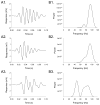
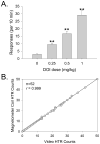
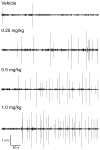
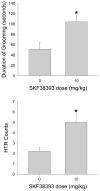
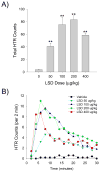

Similar articles
-
Correlation between the potency of hallucinogens in the mouse head-twitch response assay and their behavioral and subjective effects in other species.Neuropharmacology. 2020 May 1;167:107933. doi: 10.1016/j.neuropharm.2019.107933. Epub 2020 Jan 7. Neuropharmacology. 2020. PMID: 31917152 Free PMC article.
-
Return of the lysergamides. Part I: Analytical and behavioural characterization of 1-propionyl-d-lysergic acid diethylamide (1P-LSD).Drug Test Anal. 2016 Sep;8(9):891-902. doi: 10.1002/dta.1884. Epub 2015 Oct 12. Drug Test Anal. 2016. PMID: 26456305 Free PMC article.
-
Phospholipase C mediates (±)-1-(2,5-dimethoxy-4-iodophenyl)-2-aminopropane (DOI)-, but not lysergic acid diethylamide (LSD)-elicited head bobs in rabbit medial prefrontal cortex.Brain Res. 2013 Jan 23;1491:98-108. doi: 10.1016/j.brainres.2012.10.057. Epub 2012 Nov 1. Brain Res. 2013. PMID: 23123701 Free PMC article.
-
Head-twitch response in rodents induced by the hallucinogen 2,5-dimethoxy-4-iodoamphetamine: a comprehensive history, a re-evaluation of mechanisms, and its utility as a model.Drug Test Anal. 2012 Jul-Aug;4(7-8):556-76. doi: 10.1002/dta.1333. Epub 2012 Apr 19. Drug Test Anal. 2012. PMID: 22517680 Free PMC article. Review.
-
Effect of Hallucinogens on Unconditioned Behavior.Curr Top Behav Neurosci. 2018;36:159-199. doi: 10.1007/7854_2016_466. Curr Top Behav Neurosci. 2018. PMID: 28224459 Free PMC article. Review.
Cited by
-
GLYX-13 Produces Rapid Antidepressant Responses with Key Synaptic and Behavioral Effects Distinct from Ketamine.Neuropsychopharmacology. 2017 May;42(6):1231-1242. doi: 10.1038/npp.2016.202. Epub 2016 Sep 16. Neuropsychopharmacology. 2017. PMID: 27634355 Free PMC article.
-
Brexpiprazole has a low risk of dopamine D2 receptor sensitization and inhibits rebound phenomena related to D2 and serotonin 5-HT2A receptors in rats.Neuropsychopharmacol Rep. 2019 Dec;39(4):279-288. doi: 10.1002/npr2.12076. Epub 2019 Sep 5. Neuropsychopharmacol Rep. 2019. PMID: 31487433 Free PMC article.
-
A non-hallucinogenic LSD analog with therapeutic potential for mood disorders.Cell Rep. 2023 Mar 28;42(3):112203. doi: 10.1016/j.celrep.2023.112203. Epub 2023 Mar 6. Cell Rep. 2023. PMID: 36884348 Free PMC article.
-
Pharmacological and biotransformation studies of 1-acyl-substituted derivatives of d-lysergic acid diethylamide (LSD).Neuropharmacology. 2020 Aug 1;172:107856. doi: 10.1016/j.neuropharm.2019.107856. Epub 2019 Nov 19. Neuropharmacology. 2020. PMID: 31756337 Free PMC article.
-
Mechanisms and molecular targets surrounding the potential therapeutic effects of psychedelics.Mol Psychiatry. 2023 Sep;28(9):3595-3612. doi: 10.1038/s41380-023-02274-x. Epub 2023 Sep 27. Mol Psychiatry. 2023. PMID: 37759040 Free PMC article. Review.
References
-
- Adams LM, Geyer MA. Patterns of exploration in rats distinguish lisuride from lysergic acid diethylamide. Pharmacol Biochem Behav. 1985;23:461–468. - PubMed
-
- Arnt J, Hyttel J. Facilitation of 8-OHDPAT-induced forepaw treading of rats by the 5-HT2 agonist DOI. Eur J Pharmacol. 1989;161:45–51. - PubMed
-
- Bedard P, Pycock CJ. “Wet-dog” shake behaviour in the rat: a possible quantitative model of central 5-hydroxytryptamine activity. Neuropharmacology. 1977;16:663–670. - PubMed
-
- Benneyworth MA, Xiang Z, Smith RL, Garcia EE, Conn PJ, Sanders-Bush E. A selective positive allosteric modulator of metabotropic glutamate receptor subtype 2 blocks a hallucinogenic drug model of psychosis. Mol Pharmacol. 2007;72:477–484. - PubMed
Publication types
MeSH terms
Substances
Grants and funding
LinkOut - more resources
Full Text Sources
Other Literature Sources

